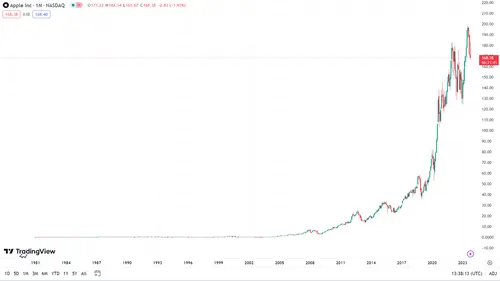Our partner, XM, lets you access a free demo account to apply your knowledge.
No hidden costs, no tricks.

Stock investing can be an incredibly complex decision. While the process of buying and selling stocks is relatively simple and straightforward, formulating a profitable investment strategy is more challenging than it may seem.
One such strategy that has been popular especially during the initial stages of the development of stock exchanges, such as NYSE, has been value investing.
Value investing is defined as the process of identifying undervalued stocks with considerable growth potential and solid fundamentals and investing in them for the long term.
However, over time, value investing has become less prevalent in the modern market, as more and more people have access to stock investing, which naturally increases the valuations of even the most modest companies on the market.
If you are a beginner investor and would like to know more about the origins of value investing and how it works, this Investfox guide can help you.
As already mentioned, value investing is a type of stock investing strategy that focuses on the underlying business and its fundamentals and seeks to identify undervalued stocks, buy them, and hold the investments in a long-term portfolio.
The concept of value investing dates back to the 20th century, with the famous investor and writer, Benjamin Graham, being the pioneer of the investment approach, which is outlined in his book “The Intelligent Investor”.
Warren Buffett, the CEO of Berkshire Hathaway and a famous investor, is the most successful example of a value investor and is noted to be a strict proponent of the investing philosophy.
The integral components of the value investing philosophy can be broken down into the following factors:
Value investing emphasizes the importance of investing in sound, well-established companies with solid financials, rather than speculating on short-term price movements.
It requires thorough research and discipline but has historically proven to be a successful investment strategy over the long term.
A great example of a value investment and perhaps the greatest-performing stock investment of all time, Apple, has risen to unprecedented heights since its IPO in 1980.
Warren Buffett has been a long-time investor in the company, with his firm Berkshire Hathaway holding a massive stake in the company, worth an estimated $177.6 billion.
If we look at the price chart of AAPL, we can see the dramatic rise of a global tech giant, which was seen as a risky tech investment prior to the unveiling of the first iPhone in 2007.

While it may be true that value investing prevails over the long run when compared to more speculative investments, this does not mean that the strategy does not have its fair share of flaws.
Investors should carefully consider the pros and cons of value investing before taking the step and start building a long-term stock portfolio.
Our partner, XM, lets you access a free demo account to apply your knowledge.
No hidden costs, no tricks.
Value investing involves identifying undervalued stocks by analyzing their financial fundamentals. Investors aim to buy these stocks at a discount to their intrinsic value, creating a margin of safety.
Value investing is a feasible strategy, but success requires thorough research, patience, and discipline. It has a strong historical track record, with notable proponents like Warren Buffett, but it may not suit all investors and market conditions.
To choose a value investment, carefully analyze the financials of the company, compare it to competitors to identify an edge, and evaluate its past performance.